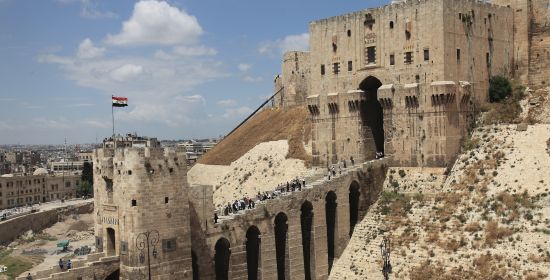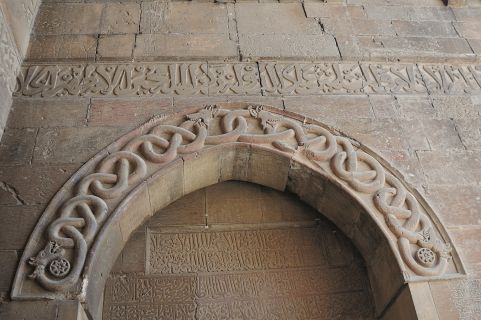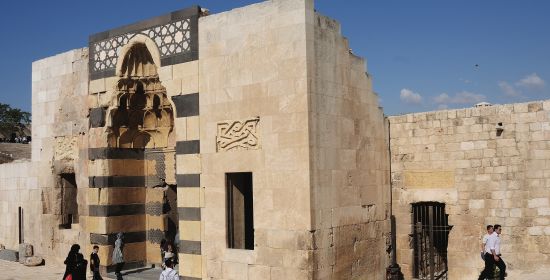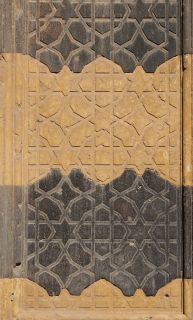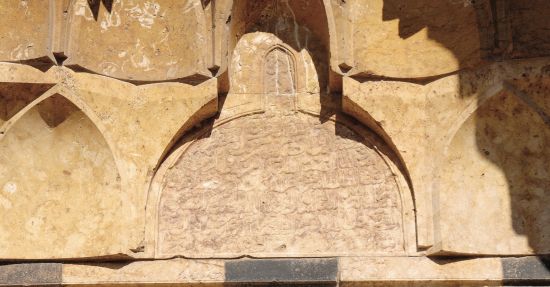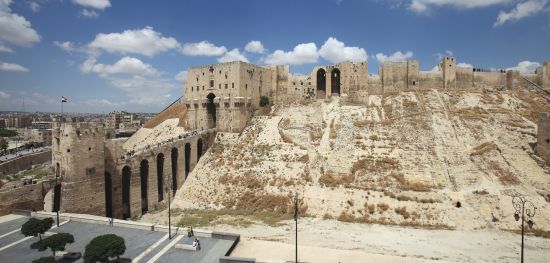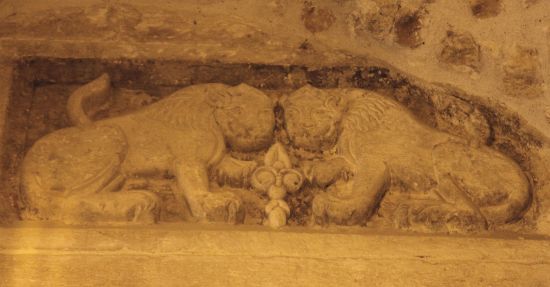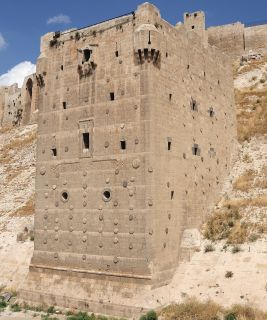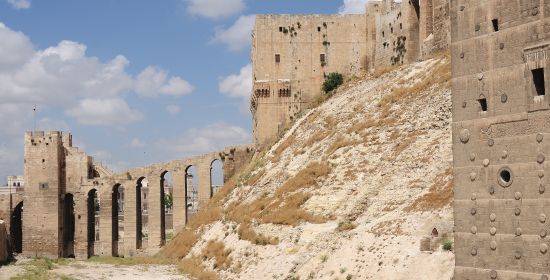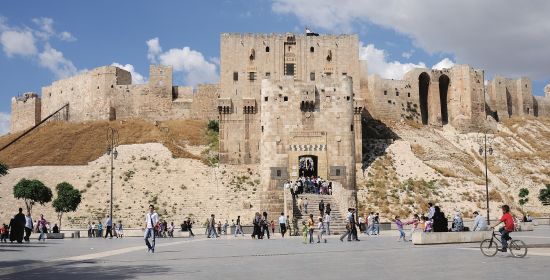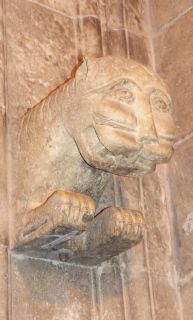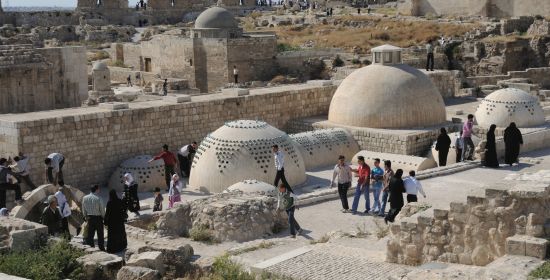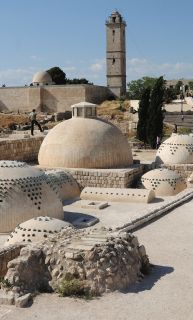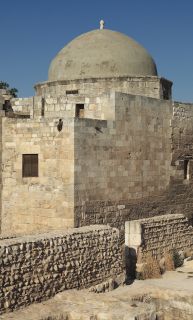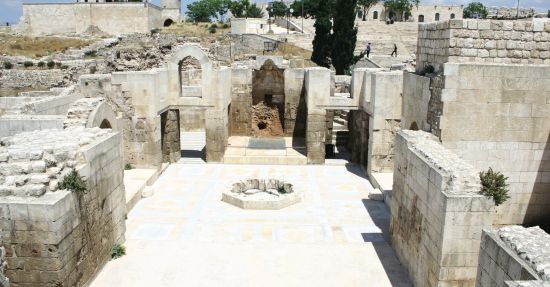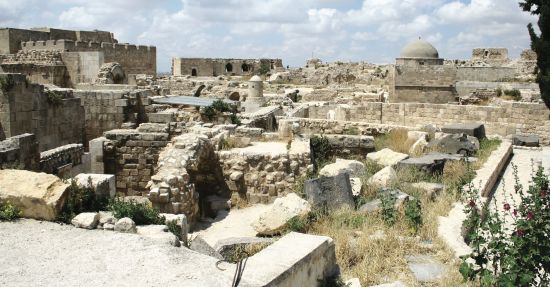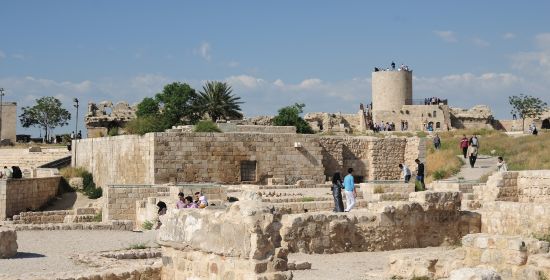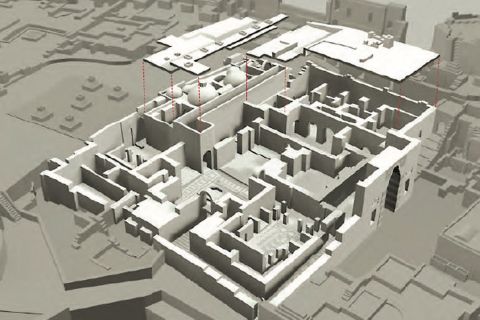Aleppo Citadel Palace
Syria Aleppo 10,11,12th Century
Seljuk, Atabeg, Zengid
The Citadel Palace is situated in the citadel of Aleppo. The Seljuks ruled the city from the beginning of the 11 th century. After this, the Zengids, then the Artuqids, and then the Atabegs ruled the city. Although Seljuk rule ended at the beginning of the 12th century, their influence continued to be felt far an extended period.
The Palace of the Citadel of Aleppo was perhaps the summit of this influence. There was a palace in Aleppo before the arrival of the Seljuks. However, there is no precise information about the palace or its location. The Hamdanid Sultan Sa'd ad Dawla had a palace built in the castle and moved there. Mirdasid, a Hamdanid administrator, had his own palace built on the hill and then moved there. It is known that Ridvan, the administrator of the city during the Seljuk period (1095-1113), and the Zengid Sultan Nureddin also had their own palaces in the citadel. lnstead of mentioning each palace, Arabic sources mostly singled out the ''Victory Palace" of the Ayyubids. Archaeological excavations have not determined the locations of these palaces. The conclusion is that all were in the same general area. There fare, the building known as "The Palace of the Seljuks" was probably the building first used by the Ayyubids and the Mamluks.
The palace, praised by Arab sources, has been excavated. However, the architecture of the palace belongs, far the most part, ta the Mamluk period. it was stated that there were stone and wood statues and wall paintings in the garden of the palace. However, nane of these have survived, due to the Mangol destruction of the city. The palace was again destroyed by Timur. The palace was still in use during the Mamluk period. Written sources state that the palace was restored about a hundred years later. However, the extent and the nature of these alterations and additions are not known.
The monumental portal of the building, uncovered during the excavations, belongs ta the Mamluk period. The portal enframement is richly decorated. it was filled with halt and full stalactites. There is a geometric pattern above the row of stalactites, composed by colored stones in a dovetail pattern. There is a window on each side of the portal with a plain lintel. There is another composition above the windows which includes a knot motif. There is a Mamluk inscription, dated 1367, above the portal.
The building laid underground until 1980. It was uncovered during the excavations carried out in the 1980s. The locations uncovered during the excavations consisted of two different courtyards surrounding the palace, the arsenal, various service sections and the baths.
There is a long, narrow corridor ater the portal. The interior of the building cannot be
seen from the street. Built parallel ta the outer bearing walls, the corridor, after passing
through several doors, leads ta a small courtyard. This small courtyard was probably used as a reception space. The section far the sultan's private guess and his residence is situated beyond this.
The large courtyard in the building has four iwans. This plan is of Central Asian and
Iranian origin. It was used in ıran by the Seljuks and taken ta Syria by them. The courtyard's floor was covered with colored stone. There are small rooms on both sides of the main
iwan. These rooms were used far the sultan's residence and recreation.
A Seljuk inscription was found near the water well of the citadel. The inscription mentions a building, whose function is not known, that was commissioned by the Sultan Malik Shah. The inscription is translated as follows: (Translation by M. Tutuncu)
"Bismallah. He ordered this to be built. it was built during the reign of the right arm of the emir of the Believers, the Great Sultan, Master of great Shahs, Master of the Arabs and the lranians, Sunan of God's territories in the world, comerstone of Islam, Müiz-ed dünya and din Celala ed devle Abufeth Malik Shah, son of Muhammad, great amir Kassem ed devle and defender of the state abu Suja Alp Aksungur in 480 (Hijri)."
Ailen, T., "Aleppo Citadel". in Ayyubid Architecture. Occidental, 2003. http://www.sonic.netl-tallen/palmtree/ayyarch/ch5.htrn#alep.cit (Erişim Ekim 2, 2012]
Berchem, Max van. "lnscriptions Arabes des Syrie iV: lnscriptions seldjoukides a Damas 475 H. and Appendice" Memoires de l'lnstitut egyptien 111, 1897, s. 417-520, Planches Mil; tre apart; s. 1-104.
Bianca, S., ed., Medieval Citadels Between East and West.: Aga Khan Trust lor Culture, lta,2007.
Gonnella, J. "La citadelle d'Alep: Les periodes islamiques, " Arche61ogie islamique xi (2001), s. 188-94.

